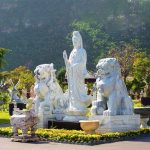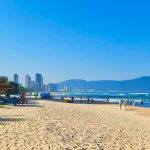Hey, Farley C here from Elitrawo Blog! After living in Vietnam for years and exploring every corner of Da Nang, I've visited the Lady Buddha Da Nang statue dozens of times – sometimes alone with my camera, sometimes guiding friends from overseas. Every visit gives me a new perspective on this magnificent landmark that's become a symbol of our city.
List of Contents
- 1. What is the Lady Buddha Da Nang?
- 2. The History Behind Lady Buddha Da Nang Vietnam
- 3. Architecture and Symbolism of the Lady Buddha Danang
- 4. Practical Information for Visiting Linh Ung Pagoda
- 5. The Visitor Experience at Lady Buddha Pagoda
- 6. Photography Tips for Lady Buddha Da Nang
- 7. Nearby Attractions to Linh Ung Temple
- 8. Money Matters: Budgeting for Your Visit
- 9. My Recommended Itinerary
- 10. Why Lady Buddha Da Nang Remains My Favorite Spot
1. What is the Lady Buddha Da Nang?

The Lady Buddha statue Danang (or Tuong Phat Ba Quan Am as we locals call it) stands proudly on Son Tra Peninsula, about 10km northeast from downtown. At 67 meters tall (that's around 220 feet), it's one of Vietnam's tallest Buddha statues and can be spotted from miles away along our coastline.
Located within the grounds of Linh Ung Pagoda, this massive white statue depicts the Goddess of Mercy. What many visitors don't realize is that the statue itself contains 17 floors, each housing 21-27 smaller Buddha statues – we call this “Buddha in Buddha.” Pretty cool, right?
So what makes this statue so special to the people of Da Nang? And why do locals like me keep coming back?
2. The History Behind Lady Buddha Da Nang Vietnam
2.1. The Origin Story
The Lady Buddha Da Nang history has both legend and fact woven together. According to stories passed down through generations (my grandfather used to tell me this one), fishermen in the early 19th century discovered a small Lady Buddha statue on the beach of Son Tra Peninsula. Taking this as a divine sign, they built a small temple to worship her.
Fast forward to 2004, when construction of the giant Lady Buddha statue began alongside the Linh Ung Bai But Pagoda. The project was initiated by Thich Thien Nguyen monk and completed in 2010 after 6 years of dedicated work. I actually watched parts of this construction as a teenager – seeing the statue gradually take shape was pretty incredible.
The statue was crafted by skilled artisans from Non Nuoc marble village, with sculptors Thuy Lam and Chau Viet Thanh leading the project. These aren't just random facts I'm sharing – my uncle's friend worked on the marble carving team!
Have you ever wondered what makes a religious monument so meaningful to an entire city? Let me tell you why this statue matters so much to us.
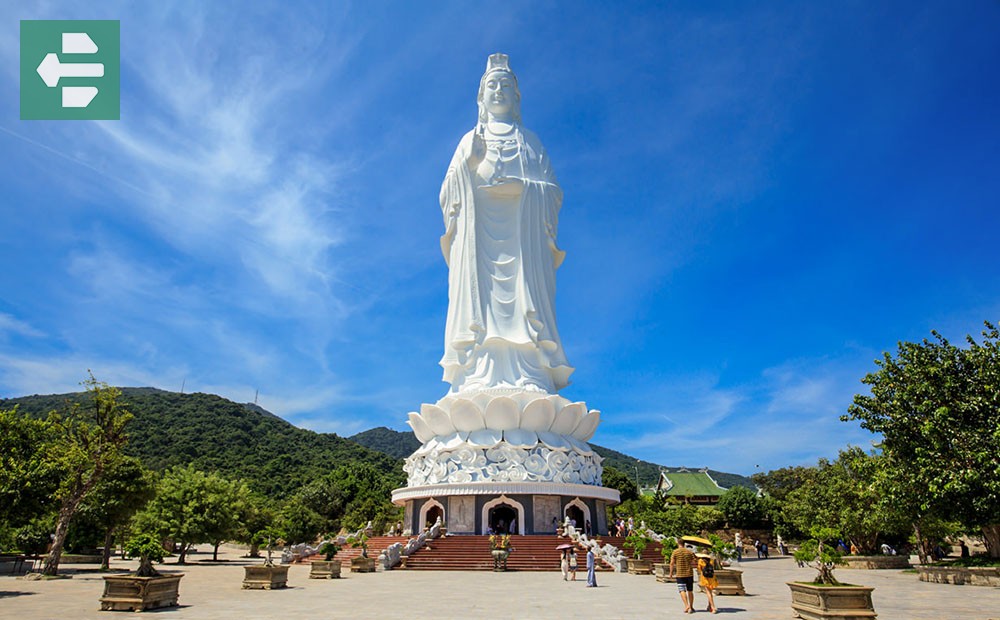
2.2. Why It Matters to Locals
For us Da Nang locals, the Lady Buddha in Da Nang isn't just a tourist attraction – she's our protector. Many fishermen (including my cousin who works on the fishing boats) come to pray to her before setting sail, believing she watches over them at sea.
There's a widespread belief that since the statue's construction, Da Nang has experienced fewer typhoons and natural disasters. I can't scientifically prove this, but I've noticed we've had better luck with weather compared to other coastal cities!
The Lady Buddha Pagoda is also part of a spiritual triangle with two other Linh Ung Pagoda sites (one at Marble Mountains and another at Ba Na Hills). Locals believe this triangle creates a protective spiritual fence around our entire city.
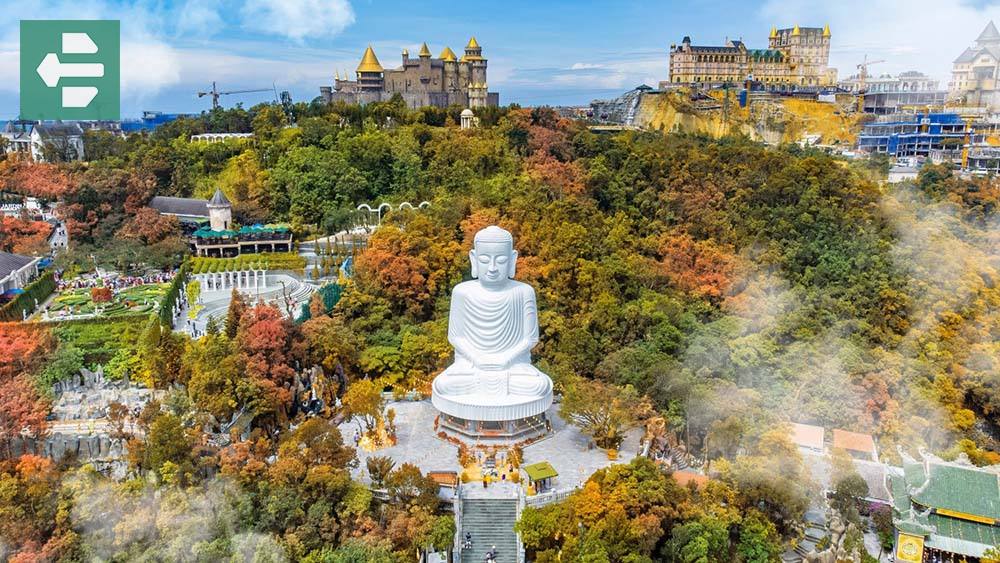
On the 1st and 15th days of each lunar month, you'll find the place packed with locals coming to pray. I usually avoid these days when bringing tourists unless they specifically want to experience the vibrant atmosphere of active worship.
What does the statue itself represent, and what makes it an architectural marvel? Let's dive deeper.
3. Architecture and Symbolism of the Lady Buddha Danang
3.1. Impressive Dimensions
Let me break down the stats of the Lady Buddha Da Nang height and structure:
- 67 meters tall (equivalent to a 30-story building)
- Stands on a lotus bloom with a 35-meter diameter
- Contains 17 floors inside, each housing 21-27 Buddha statues
- The entire structure is made of white marble
When you're standing at the base looking up, the scale is honestly mind-blowing. I've brought my DSLR camera here dozens of times, and it's still challenging to capture the full majesty in a single frame.
3.2. Symbolic Elements
If you look closely at the Lady Buddha statue Da Nang, you'll notice meaningful details that tourists often miss. Her right hand holds a water vase containing what Buddhists call the “nectar of life,” while her left hand makes a special gesture signifying the moment when Buddha puts the wheel of learning in motion.
The fact that she stands on a lotus bloom is significant in Buddhist tradition – it represents purity and enlightenment rising from the mud of worldly existence. Having studied a bit about Buddhist symbolism for my blog, I find these details fascinating.
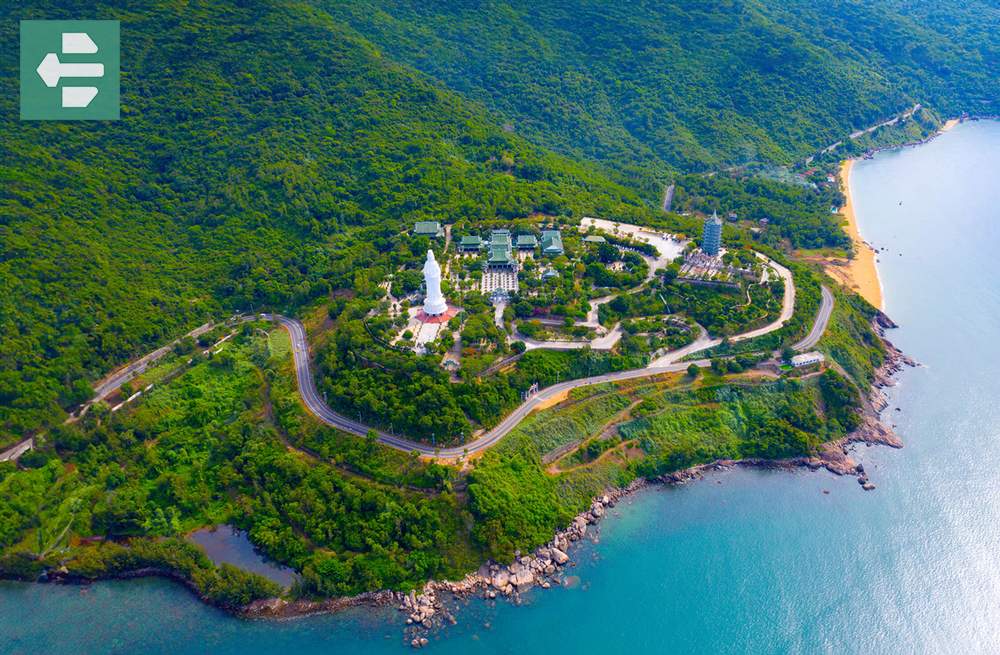
Do you want to visit but aren't sure about the practical details? I've got you covered with everything you need to know.
4. Practical Information for Visiting Linh Ung Pagoda
4.1. Location and Getting There
The Lady Buddha Da Nang address is at Linh Ung Bai But Pagoda, located on Hoang Sa Road, Son Tra Peninsula. From downtown Da Nang, it's about a 10-15 minute drive.
Based on my experience guiding friends, here are the best ways to get there:
- By taxi or Grab: Costs around 100,000-150,000 VND (about $3.85-$5.78 USD or $6.03-$9.05 AUD)
- By motorbike: The most fun option! Rental costs about 100,000 VND/day ($3.85 USD or $6.03 AUD)
- As part of a guided tour: Many include stops at Marble Mountains and other attractions
Pro tip from a local: If you're taking a Grab, save the driver's number and arrange for them to pick you up later. It can be hard to find a ride back, especially in the evening.
4.2. Lady Buddha Da Nang Timings and Best Times to Visit
The Linh Ung Pagoda opening hours are from 6:00 AM to 9:00 PM daily. From my experience bringing friends here, I recommend:
- Early morning (6:30-8:00 AM): Peaceful atmosphere and beautiful morning light for photos
- Late afternoon (4:00-5:30 PM): Golden hour light makes the white marble glow
- Avoid midday if possible: It gets HOT with limited shade
As for the best months to visit, I typically recommend:
- March through May: Perfect weather, clear skies
- September through November: Cooler temperatures, less crowded
I usually avoid bringing visitors during Vietnamese holidays when the site gets incredibly crowded with local worshippers.

4.3. Lady Buddha Da Nang Entrance Fee
Good news for budget travelers! There is no Lady Buddha Da Nang entrance fee – it's completely FREE to visit. You'll only need to pay for:
- Motorbike parking: 5,000-10,000 VND (about $0.19-$0.38 USD or $0.30-$0.60 AUD)
- Optional donation: Many visitors choose to make a small contribution to temple maintenance
Last month, I brought some American friends who were shocked it was free – they kept asking “But where do we buy tickets?” There aren't any! That's part of what makes Vietnam special.
What should you expect when you visit? And how can you make the most of your experience?
5. The Visitor Experience at Lady Buddha Pagoda
5.1. What You'll See
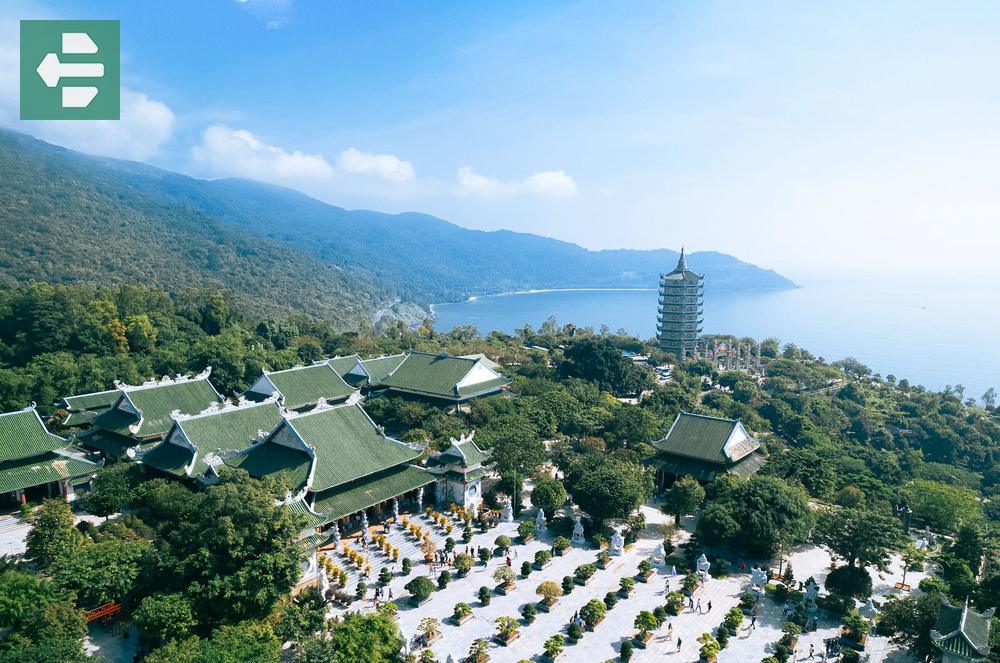
When you visit the Lady Buddha statue Danang, here's what you can expect to see (based on the route I usually take with friends):
- The main entrance gate with traditional Vietnamese architecture
- Beautiful gardens with bonsai trees and small lotus ponds
- The massive Lady Buddha statue (obviously!)
- The ground floor of the statue with its intricate marble carvings
- The main prayer hall with incense and offerings
- Panoramic views of Da Nang city, beaches, and mountains
My favorite spot is a small bench to the right of the statue where you can sit and take in the entire coastline. On clear days, you can see all the way to the Hai Van Pass!
5.2. Local Tips from Someone Who Lives Here
Having visited dozens of times, here are some insider tips I share with friends:
- Dress respectfully: Shoulders and knees should be covered. If you forget, they do provide sarongs to borrow.
- Bring water! The walk up can be hot, and there are limited vendors.
- Watch out for the monkeys! They can be aggressive if you have food. I learned this the hard way when one snatched my banana.
- Remove your shoes before entering the prayer hall and the statue's ground floor.
- Stand to the side when taking photos to avoid blocking worshippers.
A personal story: Last year, I was showing an Australian couple around when we witnessed a Buddhist ceremony with monks chanting. We stood quietly in the back, and afterward, one of the monks invited us to join them for tea. These spontaneous moments often become visitors' favorite memories.
Want to capture amazing photos? Here's how to get the best shots at different times of day.
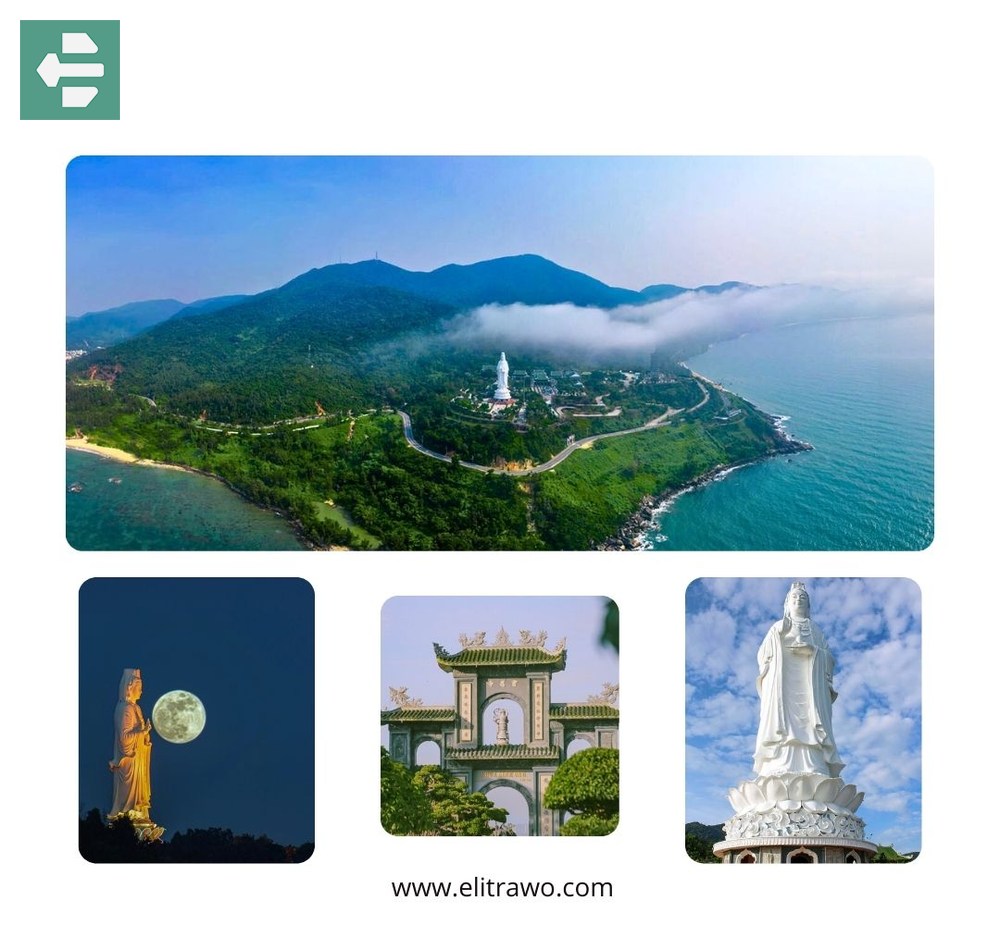
6. Photography Tips for Lady Buddha Da Nang
As someone who's photographed this place in all types of weather and lighting conditions, I've got some tips:
6.1. Best Times for Photography
- Early morning: Soft light with fewer people. The statue often has a mystical quality with morning mist.
- Golden hour (1 hour before sunset): My personal favorite! The warm light on the white marble creates a magical glow.
- After dark: The statue is illuminated at night, creating dramatic opportunities for night photography.
I've found that cloudy days can actually be better for photography as they provide even lighting without harsh shadows on the white marble.
6.2. Unique Angles to Try
- From the lotus base looking up (dramatic perspective)
- From the small garden to the right (frames the statue with flowers)
- From the stairs in front of the main prayer hall (classic frontal view)
- Including the ocean in the background (shows the statue's protective stance)
I usually bring a 24-70mm lens, which gives me enough flexibility for both wide shots and details.
Curious about what else to see while you're in the area? Let me share some local favorites.
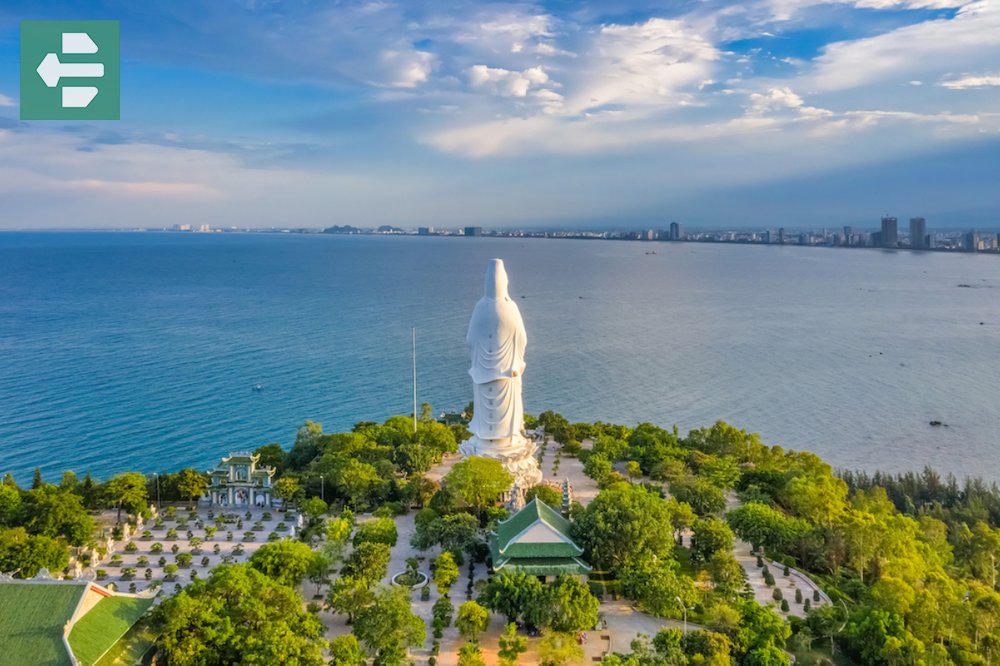
7. Nearby Attractions to Linh Ung Temple
7.1. Nature and Beaches
Within a short drive from Lady Buddha Da Nang Vietnam, you can visit:
- Son Tra Nature Reserve: Home to the rare red-shanked douc langur monkeys
- Bai Bac (North Beach): A secluded beach below the peninsula (one of my weekend spots)
- Ban Co Peak: For even more spectacular views (requires a bit of hiking)
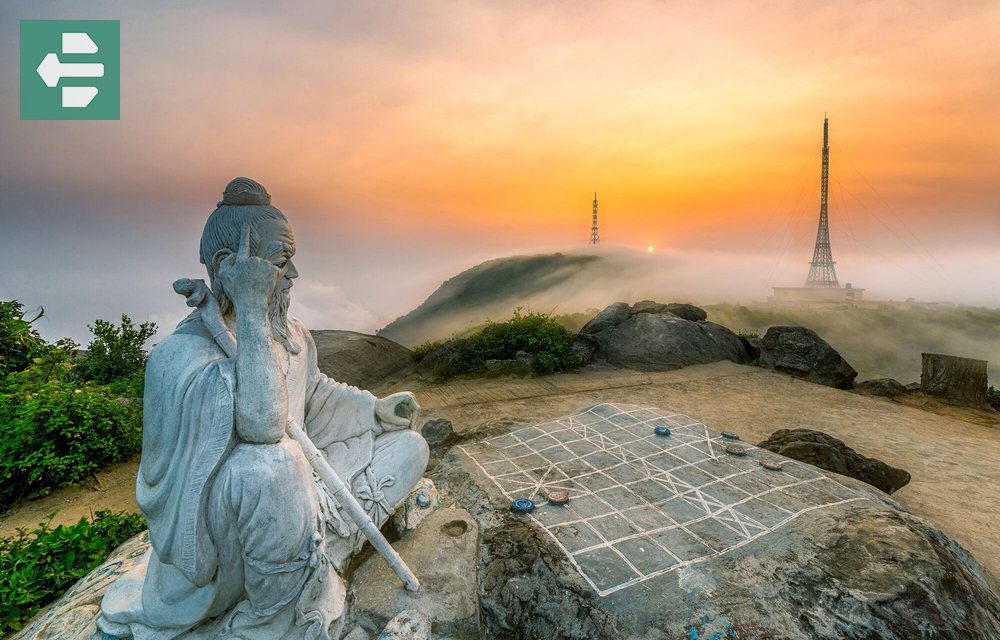
7.2. Cultural Sites
If you're interested in culture and history, don't miss:
- Marble Mountains: About 15 minutes drive south, with caves, temples, and stunning views
- The other two Linh Ung Pagoda sites (one at Marble Mountains, another at Linh Ung Pagoda Bana Hills)
- Non Nuoc Stone Carving Village: See artisans creating marble sculptures similar to those at Lady Buddha
I usually recommend combining Lady Buddha with Marble Mountains for a half-day tour – they complement each other nicely and show different aspects of Buddhist culture in Vietnam.
8. Money Matters: Budgeting for Your Visit
For my American and Australian readers, here's a quick budget breakdown (based on May 2025 exchange rates):
Current exchange rates:
- 1 USD = approximately 25,960 VND
- 1 AUD = approximately 16,568 VND
Typical costs:
- Grab/taxi from city center: 100,000-150,000 VND ($3.85-$5.78 USD / $6.03-$9.05 AUD)
- Motorbike rental: 100,000 VND/day ($3.85 USD / $6.03 AUD)
- Snacks/drinks at nearby vendors: 20,000-50,000 VND ($0.77-$1.93 USD / $1.21-$3.02 AUD)
- Optional donation at temple: Whatever you feel comfortable with
Da Nang remains one of Vietnam's most affordable destinations for travelers, which is why I love bringing friends here.
Have you decided to visit Lady Buddha Da Nang? Want to know the best way to fit it into your itinerary?
9. My Recommended Itinerary
After bringing countless friends here, I've found this itinerary works best:
- 7:00 AM: Breakfast at a local café in Da Nang (I recommend Cong Cafe)
- 8:00 AM: Arrive at Lady Buddha (before tour buses)
- 9:30 AM: Head to Marble Mountains (10-15 minute drive)
- 12:00 PM: Lunch at Non Nuoc Beach
- Afternoon: Return to Da Nang or continue to Hoi An
Alternatively, visit in late afternoon (around 4:00 PM) after the day's heat has subsided, then stay for sunset views over the city.
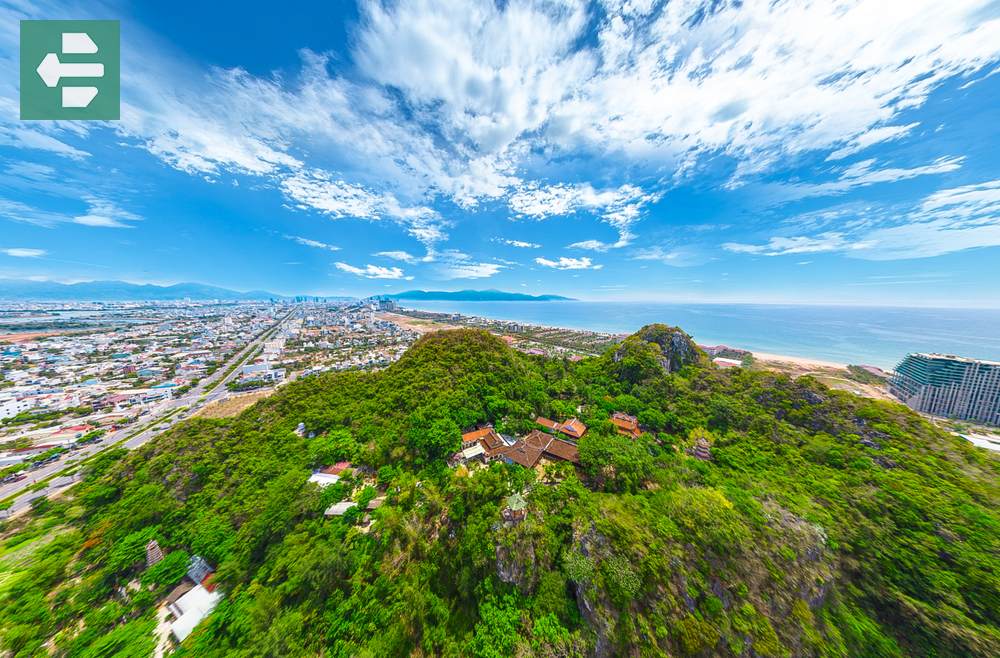
10. Why Lady Buddha Da Nang Remains My Favorite Spot
After living in Da Nang for years and visiting countless temples and pagodas across Vietnam, the Lady Buddha statue Da Nang remains one of my favorite places to bring visitors. It combines spiritual significance, architectural beauty, and natural scenery in a way that never fails to impress.
What makes it special isn't just the statue itself, but the feeling you get standing there with the ocean breeze, looking out over the city that I'm proud to call home. It's a place where you can experience both the ancient spiritual traditions and the modern development of Vietnam in one panoramic view.
If you have any questions about visiting Lady Buddha or other attractions in Da Nang, feel free to reach out through my blog or social media. I'm always happy to help fellow travelers discover the beauty of central Vietnam.
Have you visited Lady Buddha Da Nang? What was your experience like? Share in the comments below!



